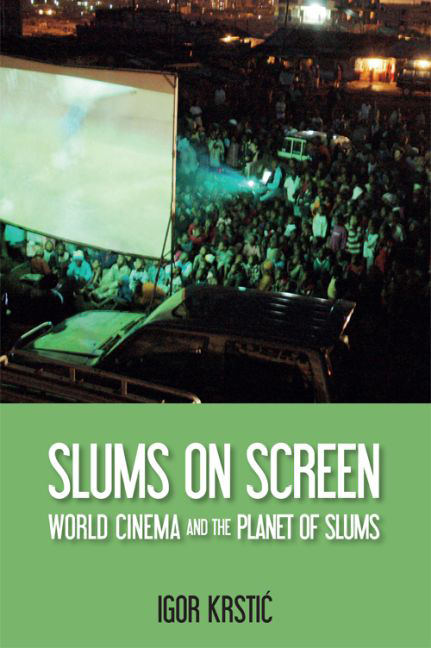Book contents
- Frontmatter
- Contents
- List of Figures
- Acknowledgements
- Introduction
- 1 Slums on and off Screen
- Part One Global Currents
- 2 Sensational Remediations
- 3 Documentary Mappings
- 4 Neorealist Narratives
- 5 Third Docufictions
- 6 Postmodern Bricolages
- 7 Digital Realisms
- Part Two Local Expressions
- Conclusion
- Bibliography
- Index
5 - Third Docufictions
from Part One - Global Currents
- Frontmatter
- Contents
- List of Figures
- Acknowledgements
- Introduction
- 1 Slums on and off Screen
- Part One Global Currents
- 2 Sensational Remediations
- 3 Documentary Mappings
- 4 Neorealist Narratives
- 5 Third Docufictions
- 6 Postmodern Bricolages
- 7 Digital Realisms
- Part Two Local Expressions
- Conclusion
- Bibliography
- Index
Summary
The other global culture … has its social roots in the huge migration from the rural Third World to the trench towns of the planet.
Michael DenningWe see an image, saturated with warm, sunny colours. It is a hot day in a busy city. A tractor passes through the frame. Its driver looks over his shoulder to get a glimpse of the cameraman who is positioned near a junction. However, it is not the lively traffic in the centre, but a young black man crouching at the very margin of the shot's frame, to which the French narrator – obviously an educated man with authority – draws our attention: ‘Each day, young people, like the characters of this film, arrive in the cities of Africa … They know how to do nothing and everything. They are one of the new illnesses of the new African cities: unemployed youth’. Like the tractor driver, the young black man also looks straight into the camera; we are once again in the realm of the documentary genre, or are we? The following shot shows us three young men instead of just one, who are all crouching at the edge of the very same street. Now the camera focuses exclusively on this group of black youths who, supposedly, have migrated from the African countryside to this busy city in search of jobs. One of the figures looks up at the man behind the camera before lying down to sunbath, as if to make sure he is doing the right thing. Is he following the filmmaker's instructions? Now we see a shot – and its reverse shot – that show them having a conversation but we do not hear their voices or see their faces clearly. A shadow created by the camerama is covering them while the shaky, handheld camera insists on the authenticity of the scene. Is this a chance encounter between a film-maker and three young men or a staged scene to emphasise the filmmaker's statements? Fact or fiction, it is not entirely obvious.
- Type
- Chapter
- Information
- Slums on ScreenWorld Cinema and the Planet of Slums, pp. 115 - 139Publisher: Edinburgh University PressPrint publication year: 2016



